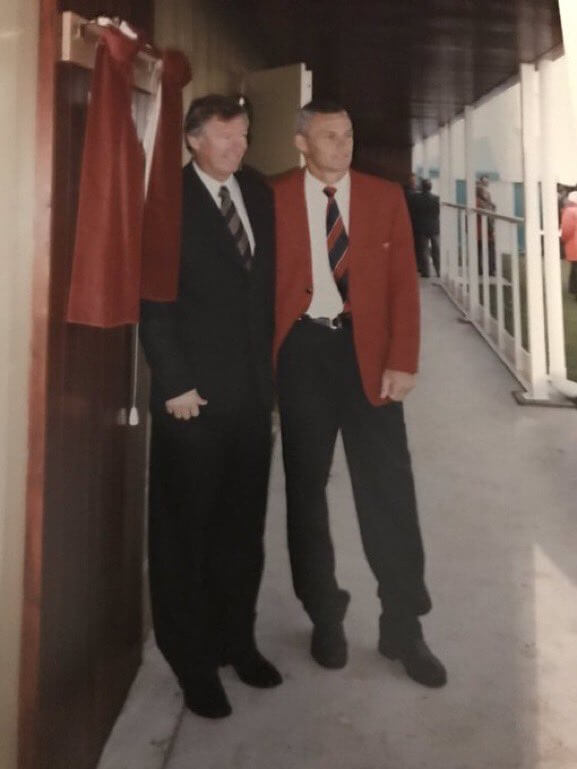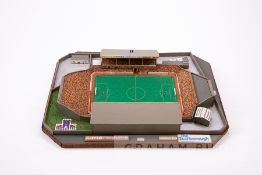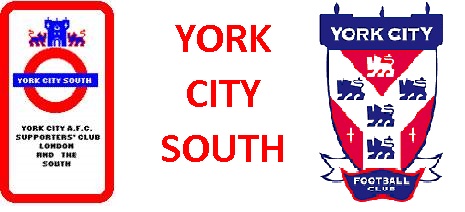

Bootham Crescent - The Home Ground Of York City
Formed in 1922, City spent 10 seasons playing on the outskirts of York before moving to Bootham Crescent. We should (hopefully) finally vacate our city centre location in 2020 when we return to the outskirts of York
Fulfordgate
When York City Football Club was formed in 1922, eight acres of land were purchased for £2,000 in Heslington Lane, Fulfordgate. This was in the south-east of the city, away from the centre and not far from where the university is now situated.
It was very much a rural setting, the land was known as Gate Fulford. Hawthorn hedges formed its boundaries and it was very well drained. There were no turnstiles as we know them today, only gates. The name was reversed to be called Fulfordgate. At first there were no covered stands. The dressing rooms consisted of an old army hut. Later, open stands were bought from York racecourse.
Building works meant City had to play their first 2 home league games in the Midlands League at Mille Crux, Haxby Road, the home of Rowntree football club. 2 other games (a friendly v Sheffield Wednesday Reserves and Red v Blues practice match) were also played at the ground. Rowntree's fee was 10% of the gate receipts. On 15th September 2020, City returned to Mille Crux for a pre season friendly with Scarborough Athletic, played at Athletic’s training ground, the York St Johns sports complex, the teams played out a goalless draw behind closed doors in a game of 2 30 minute halves.
The first match played at Fulfordgate was on Wednesday, 20 September 1922, against Mansfield Town. The game went ahead only after the necessary requisite deposit, which amounted to £180, was paid. This cash, courtesy of one of the directors, Mr. John Fisher, was produced literally at the last minute.
On October 7, City's game against Barnsley was designated as the ground's official opening. 2,500 turned up, at the same time, over 9,000 were at Clarence Street watching a rugby league game, a portent of things to come.
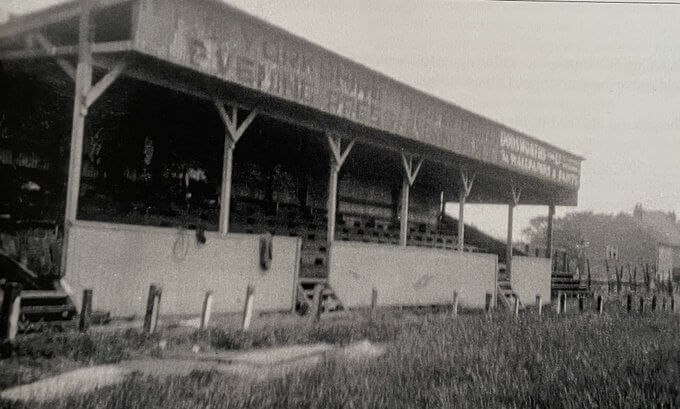
Gradually, the ground was built up and improved and, within a couple of years, covered accommodation was available. In the letter of application for admission to the Football League in 1927, York City were able to say that the ground was 'splendidly drained, well-equipped, spacious and capable of being extended to hold up to 40,000 spectators'.
Considerable improvements were made that year. New turnstiles were fitted and stronger fencing was built around the pitch. It was reported that when that fencing was completed, it would be much more difficult for a spectator to surmount it and go on the pitch - an important feature from the referee's view. Behind one of the goals, nine-tier terracing replaced the old banking. The covered 'popular' stand was extended and could now house 1,000. There was also by now a small seated stand. Ground improvements continued, many undertaken by The Supporters Club, throughout City's time at Fulfordgate, the summer of 1931 saw improved banking at the Fulford End and the covered side was fully terraced, giving shelter to around 5,000 fans. 1931 saw the erection of the first brick built offices.
Before City were elected to the Football League, the biggest crowed housed at the ground was 8,318 (receipts £366) to see the English Schools' Trophy semi-final between York Boys and Brighton Boys on 12 May 1928. In the York team were Reg Stockill and Dave Halford, both of whom went on to have distinguished football careers. By the time of the election to the League the following year (1929), it was estimated that Fulfordgate could accommodate 17,000.
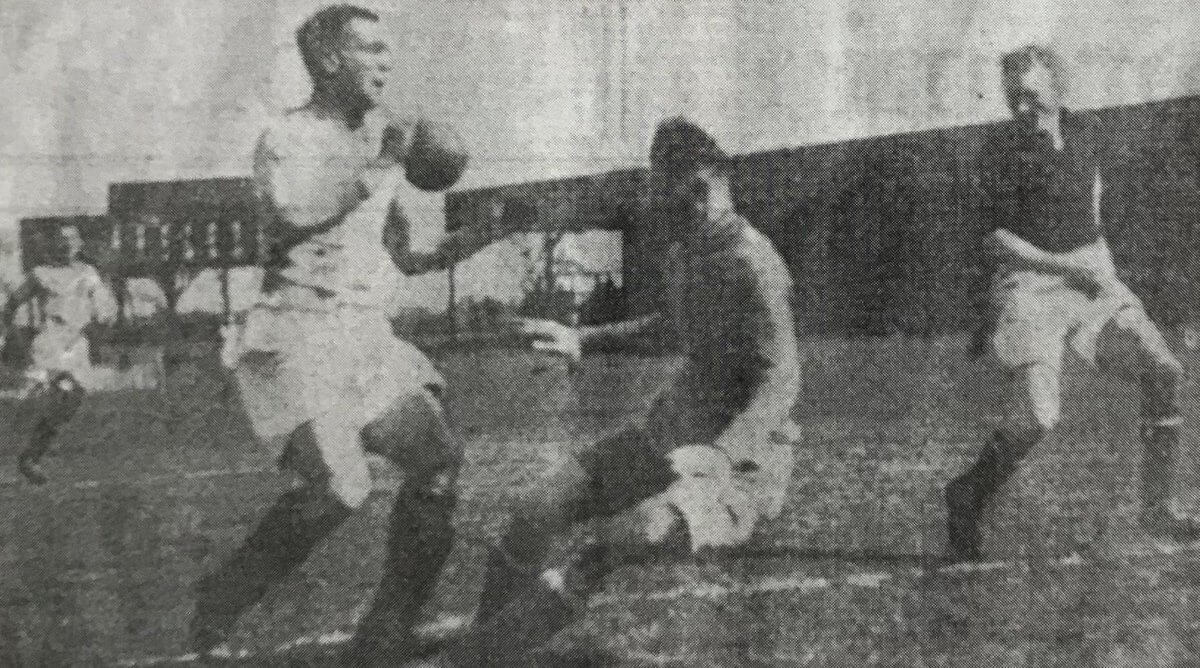
The ground was to stage two big FA Cup third-round replay matches against top flight opposition. In January 1930, for the visit of Newcastle United, 12,583 congregated, paying receipts of £900 5s 3d. The following year, Fulfordgate records were set when 12,721 paid £1,058 16s for the visit of Sheffield United.
However, crowds were generally low and pleas from the directors for more support went unanswered. At the time, annual losses were a regular occurrence. By December 1931, the directors were seeking to cut players' wages by 10%.
A few other games at the ground stand out.
Bootham Crescent
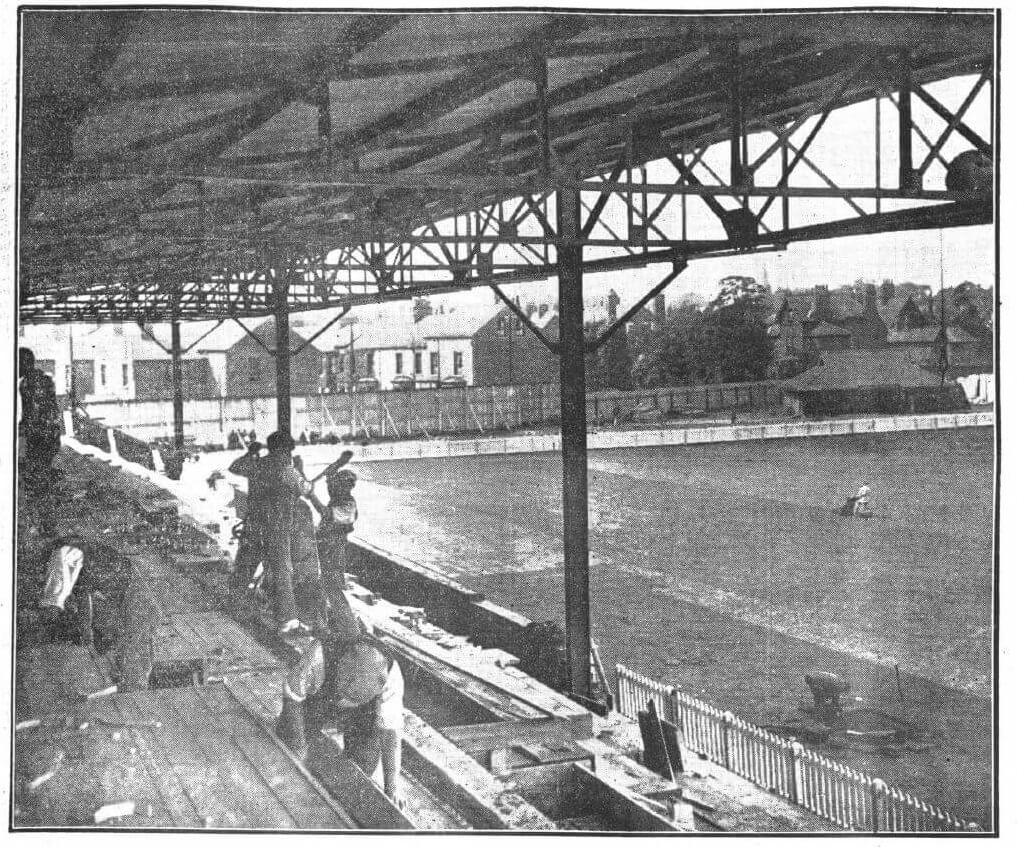
Towards the end of the third season in the Football League, concern was expressed at York City's poor support. One of the directors, Mr. G.W. Halliday, was convinced that the only solution was a change of ground. A major problem about Fulfordgate was the relative inaccessibility of the place. It was a good distance from the railway station and the tram service to Fulford had only a single track with a loop system for tram cars passing one another which also restricted the service. Indeed areas of York, Bootham and Clifton included had no tram service, meaning a walk into the centre to catch a tram out to Fulfordgate. As early as 1929, pre Football League, the club had noted the tram struggled to cope with the crowds and had held talks with York Tramways with the view to double the track, a request that was denied due to the costs involved. The bus routes had not been fully developed and, with general car ownership still a long way in the future, Fulfordgate, without doubt, was not an easy ground for the majority of supporters to reach.
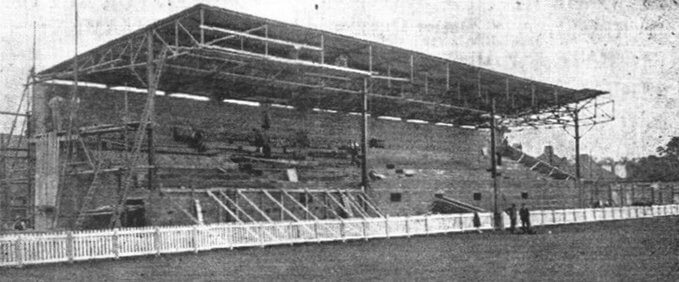
Early in 1932, a ground which was geographically ideally situated near the centre of the city became vacant.
For a number of years York Cricket Club had played at Bootham Crescent, but they had decided to move to new headquarters at Wigginton Road, which is now the site of York & District Hospital. Yorkshire Gentlemen's Cricket Club had previously played at Wigginton Road, but they in turn had decamped to Escrick Park. Cricket had been played at Bootham Crescent for many years. Meanwhile, in June 1890, Yorkshire beat Kent by eight wickets on the Wiggington Road ground in what remained, until 2019, the only County Championship match played in York.
Known as "Bootham crescent", the land was owned by Barker's Charity which dated back to 1711 and was associated with St Saviours and provided many basics for the needy and impoverished in York.
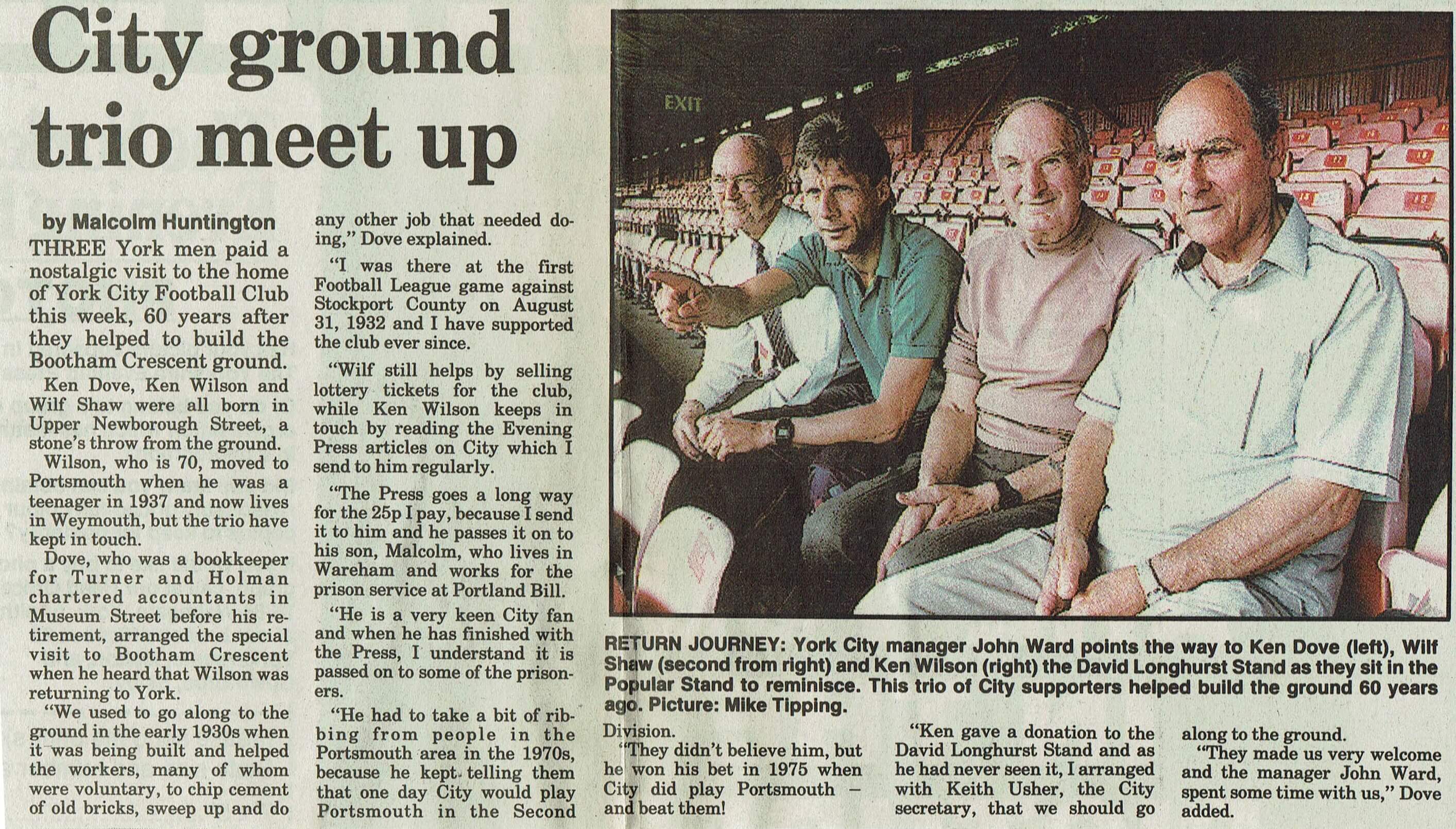
At the meeting the Chairman, Mr. Arthur Brown, drew attention to the 'gate' receipts figures in the three seasons of League football at Fulfordgate, (1929-30 £261; 1930-31 £183; and in 1931-2, when the club were near the top of the table for the first half of the campaign, £198). This represented average league crowds of approximately 4,000 and at the end of the day a deficit on the balance sheet. The board felt that the class of football had been good enough but the distance to Fulfordgate from the main parts of the city, coupled with the inadequate transport services, had a serious effect on attendances especially in bad weather and in winter when early kick-offs were the order of the day to complete matches in daylight. In those days, many men still worked a five and a half day working week, not finishing their shift until 1 o'clock on Saturday.
Mr. Halliday pointed out that in a one-mile radius of Bootham Crescent the population was 30,000, whereas for a similar radius at Fulfordgate it was only 3,000. On the question of ownership against tenancy, Mr. Brown stated that Fulfordgate was mortgaged as far as possible and the present mortgage, bank interest and overdraft would exceed the rent and rates at Bootham Crescent by £40 per annum.
The directors were satisfied that the new ground would fulfil all requirements. There were no restrictions as to banking, terracing and the erection of stands and the property of the shareholders would be fully protected if the lease expired. The lease, eventually signed in early June, was for 14 years with an option for a further 7 years, at £90 per annum rising to £100 from year 8.
The oldest stand at Fulfordgate needed replacing and it was pointed out that the club could put up a structure three times the size on the new ground. New dressing-rooms were also required at Fulfordgate.
There was some opposition to the move. A former director, Mr. J. Fisher, who had proved a benefactor back in 1922, said that during the club's ten years existence, it had built a playing history and a ground second to none in such a short time. He pointed out that it had been a bad time for football clubs generally with regard to crowds and that good times would come again to Fulfordgate. He condemned the proposal as a bad policy when it involved renting a ground instead of owning it. The Fulfordgate pitch had an excellent playing surface, whilst the new ground was on land subject to severe flooding. There was also a danger of Bootham Crescent being more heavily-rated once it got valuable equipment on it. Another former director, Councillor W.H. Shaw, also opposed the scheme and expressed doubts regarding the approaches and, looking ahead to the future, car parking limitations at the new ground.
After much discussion, the matter was put to the vote and by a majority of over three to one (115 for, 37 against) the shareholders approved the move to take on lease the Bootham Crescent ground. The 1931/2 season ended with an average gate of 4,330, a number that would be regularly exceeded at Bootham Crescent until 1976. Early suggestions were of a 2 year timeline to move grounds, with the second year seeing a new third City side bed in at the new ground.
The Fulfordgate site was subsequently sold and developed as a building estate. There is nothing now to indicate it as the site of the birth of modern football in York in 1922.
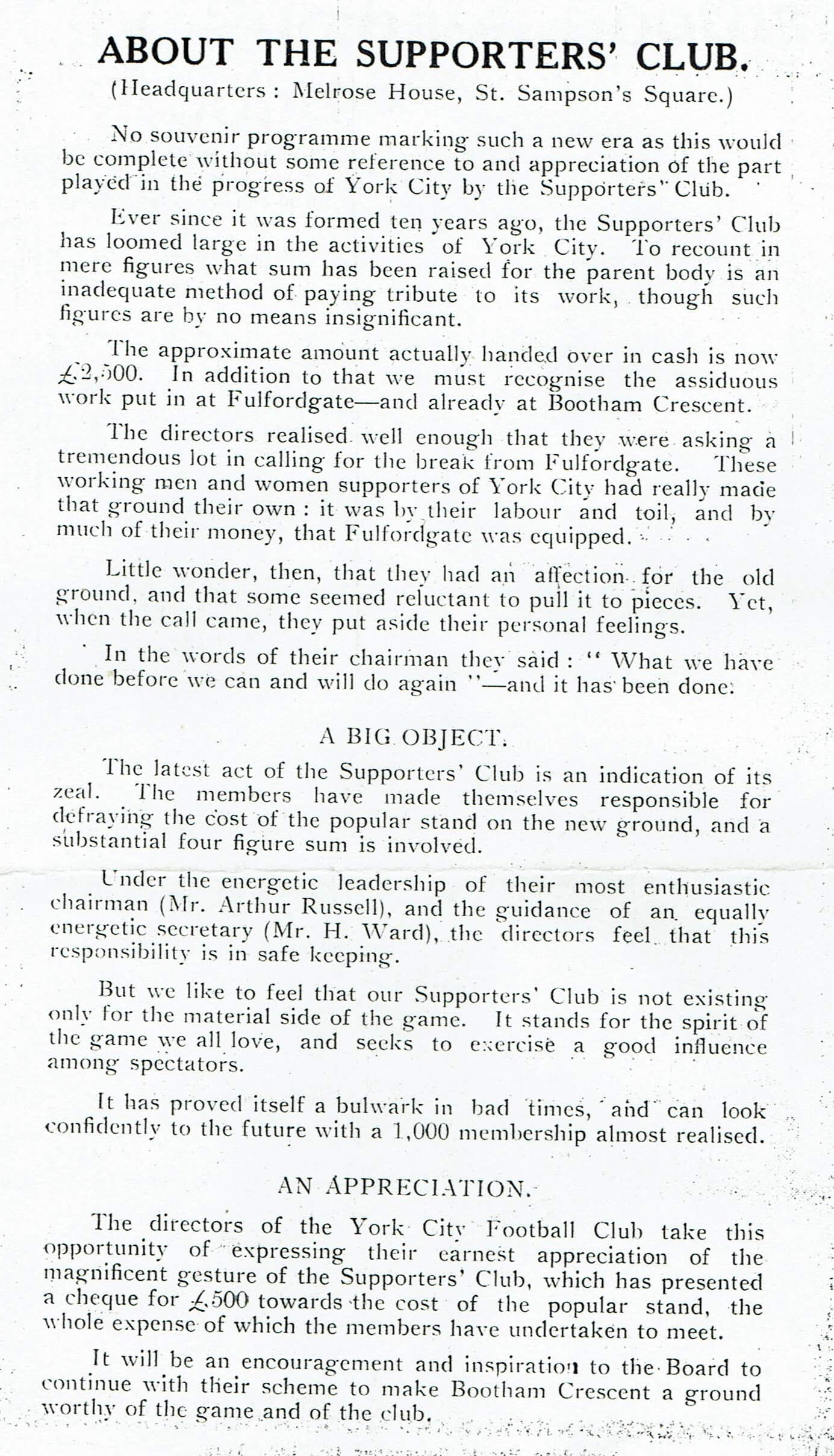
In Mid May, 1932/3 seasons tickets were on sale for Fulfordgate at £2 (£1.10 for ladies).
The summer of 1932 saw a period of feverish activity as the new ground was built. Messrs Wiliam Birch & Sons were appointed as main contractors, within weeks, the new ground was built in readiness for the 1932-3 season. The area was first drained and then built to the design of Messrs Ward & Leckenby, architects of York. Two stands were erected - the Main (members') Stand the Popular Stand. Legend has it that The Yorkshire Brewery provided funds to build the social club and that they dismantled the cricket pavilion and re-assembled it in their yard.
Fundraising was in full swing, life membership (£10.50) and debentures (£50) were pushed whilst local builders were requested to leave any unwanted materials at the new ground.
The Supporters Club undertook the responsibility for defraying the cost of The Popular Stand. There were deep pockets and willing hands, many supporters gave penny and threepenny coins to the cause. Throughout the club's history, The Supporters Club and the supporters in general have played a part in the building and maintenance on Bootham Crescent. In 1932, they removed many railway sleepers from Fulfordgate and manhandled them across the city to help build the new ground. They humped barrow loads of hard core, rubble and soil into place to build the incline for The Popular Stand. They also raised the £1,500 sum to pay for it. Amongst the many helpers were the likes of Harry Ward, ‘Taffy’ Shaw, and Arthur Russell. The Popular Stand was topped out with a plaque noting the efforts of the supporters in building and maintaining the stand. It remained in place until the plaque fell into disrepair in the 1970s.
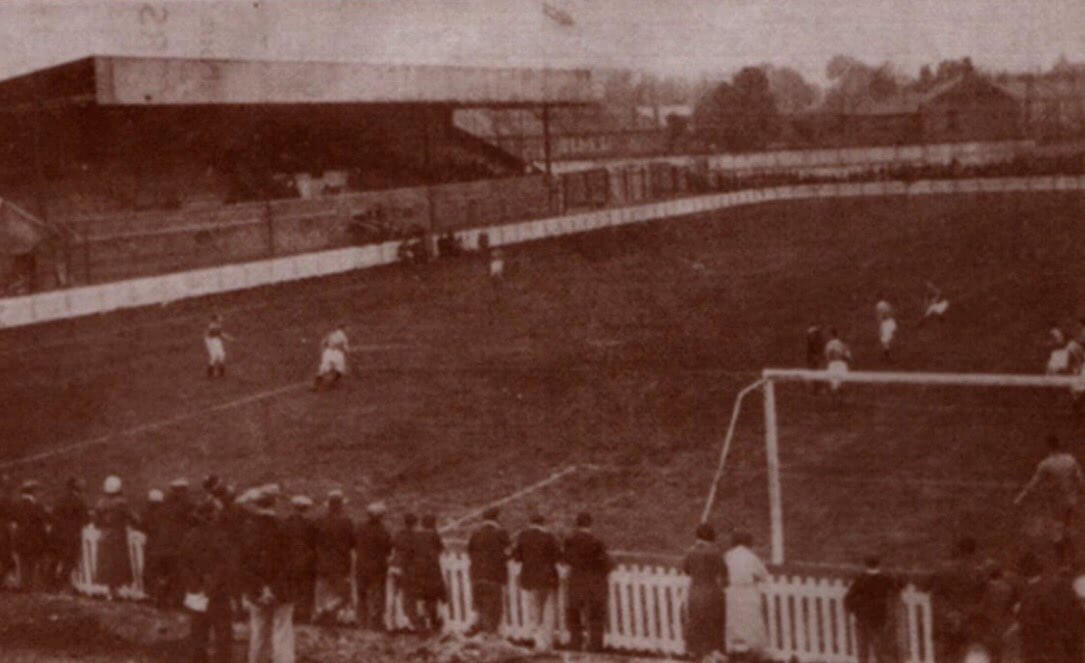
The usual pre season first v reserve team match attracted twice the crowd (3,000) that usually attended the same game at Fulfordgate, but was still well below the 4,500 who ventured across the train tracks for the York RLFC friendly against Batley on the same afternoon.
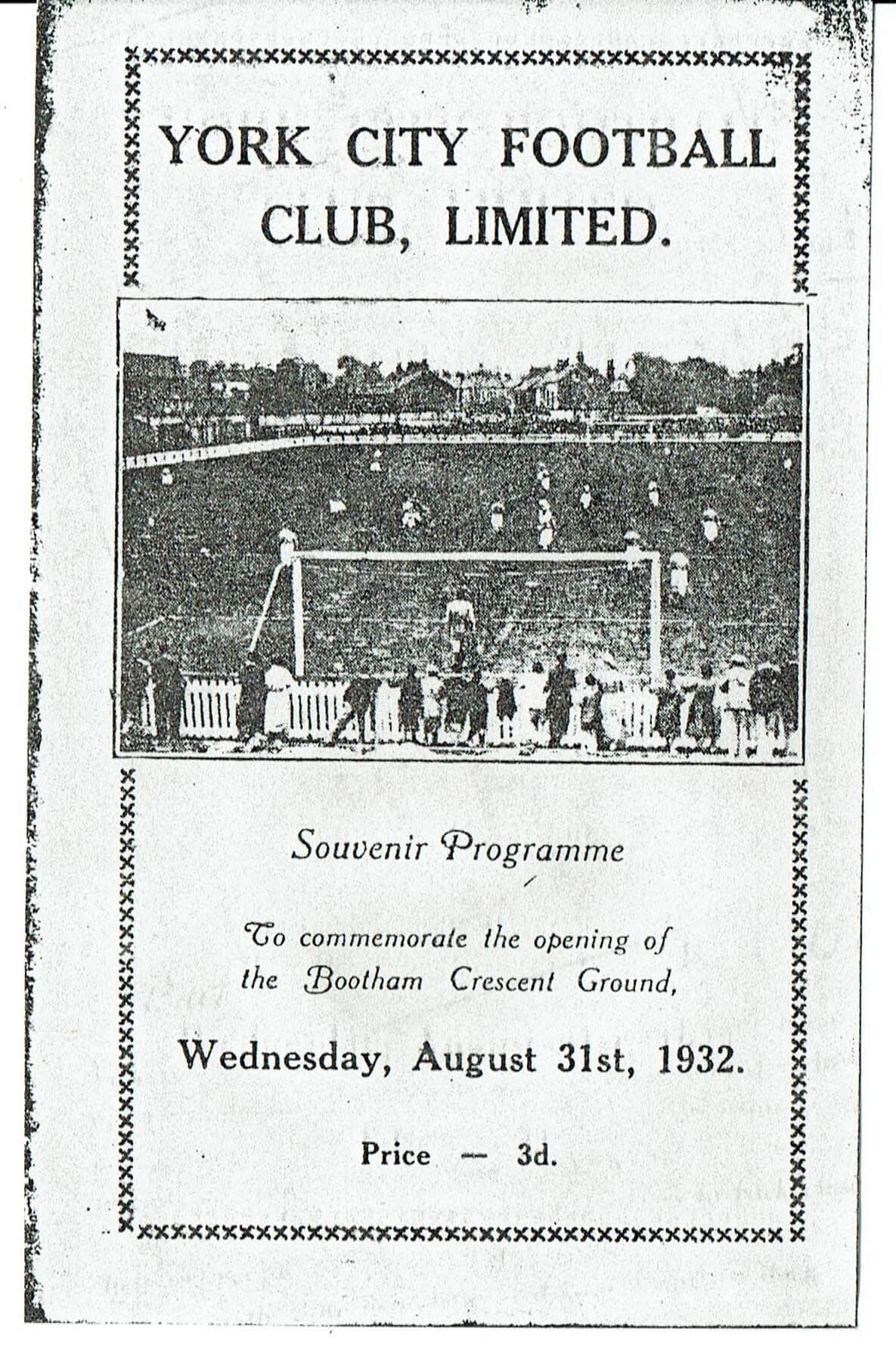
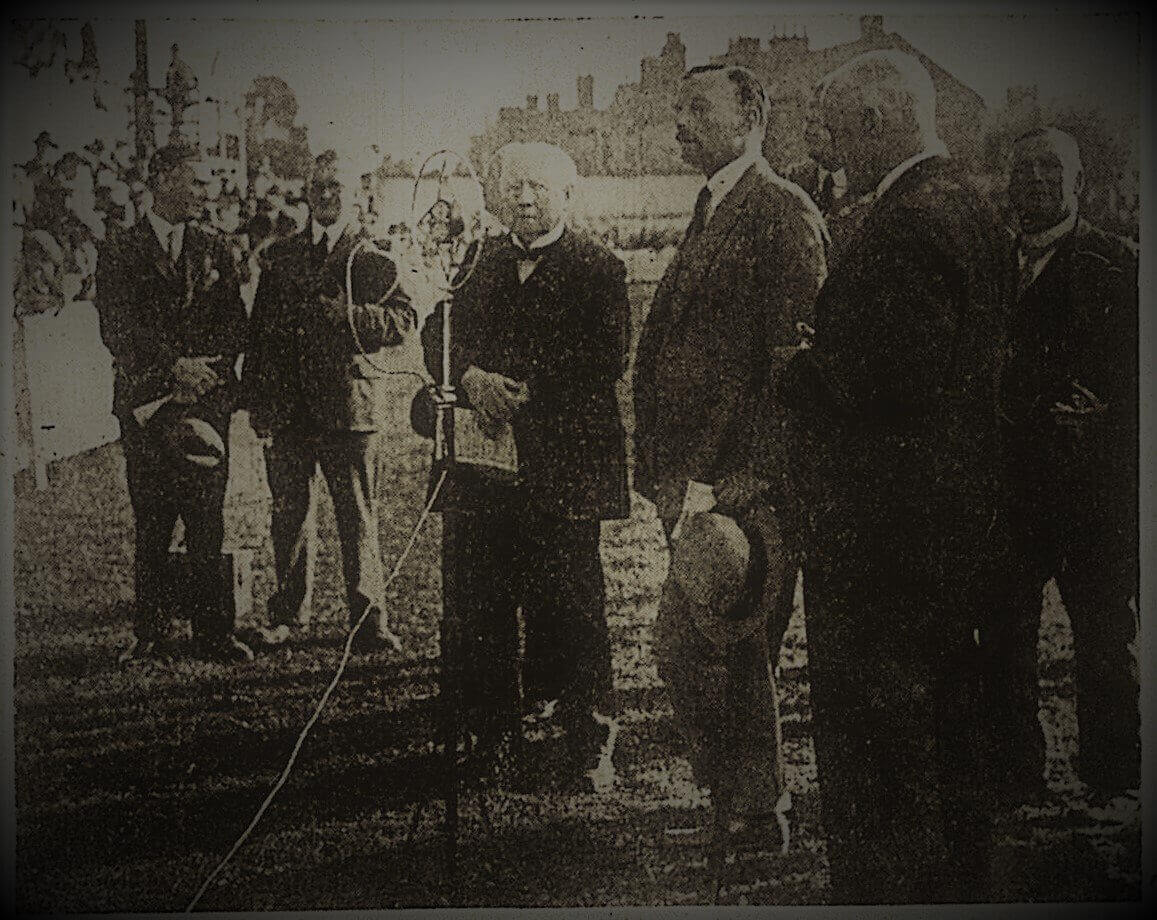
Bootham Crescent was officially opened on August 31 1932, when City welcomed Stockport County as the first Football League visitors. The game ended as a 2-2 draw, Tom Mitchell scored City’s first ever goal at Bootham Crescent.
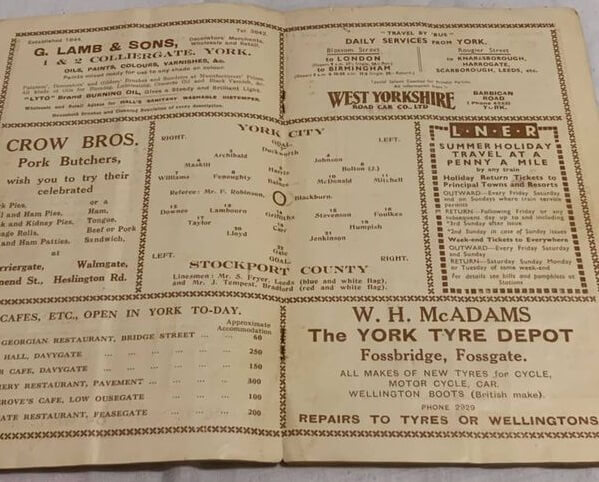
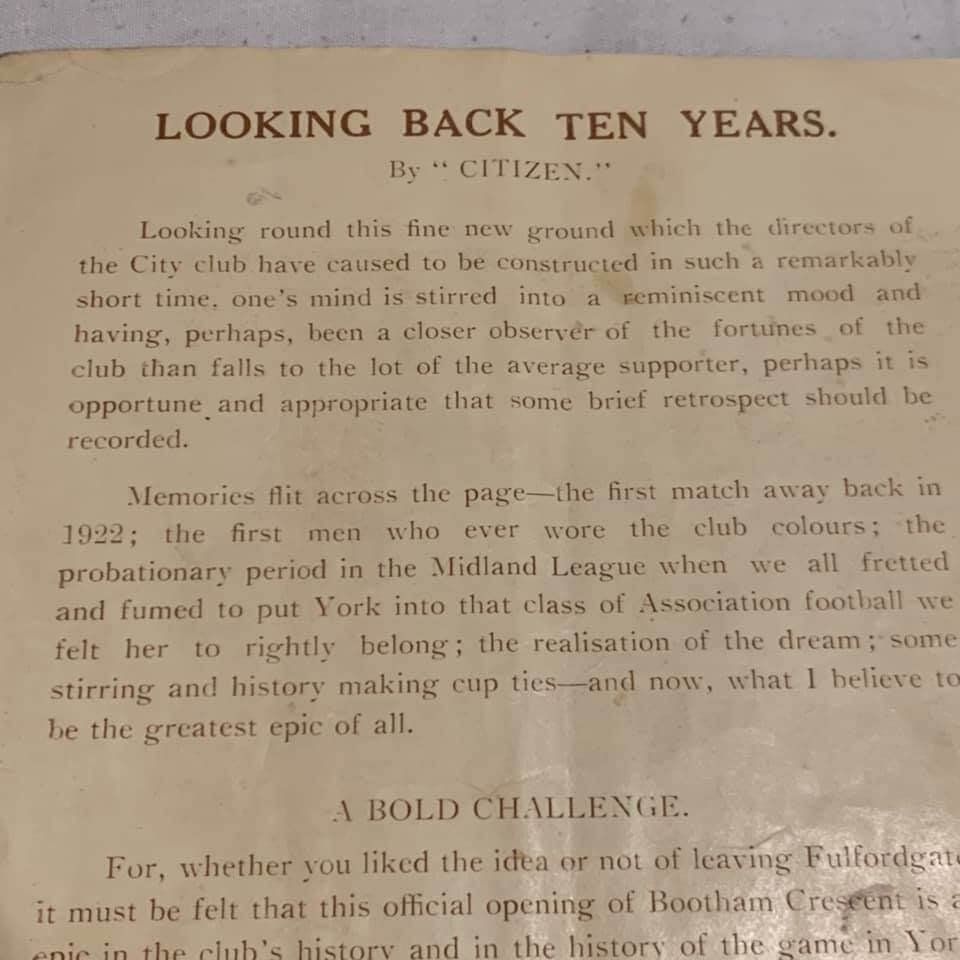
The 1930s saw City struggle financially, but fortunes improved on and off the pitch in the 1937/8 season as City reached the FA Cup quarter finals. The attendance record at Bootham Crescent was broken in four consecutive rounds against Coventry City (13,917), West Bromwich Albion (18,795), Middlesbrough (23,860) and Huddersfield Town (28,123), the all time ground record. Local lad Reg Baines had been City’s top scorer during the first Bootham Crescent season and figured prominently during the cup run.
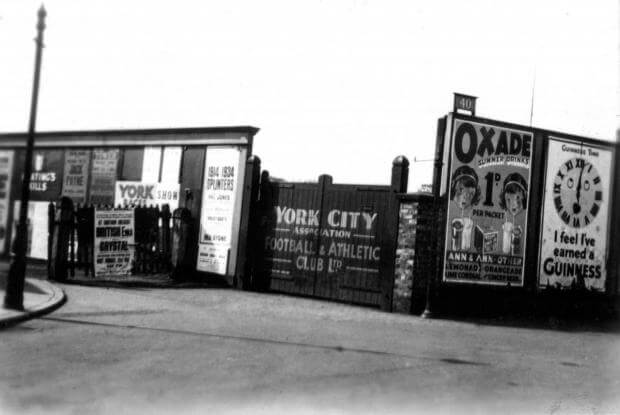
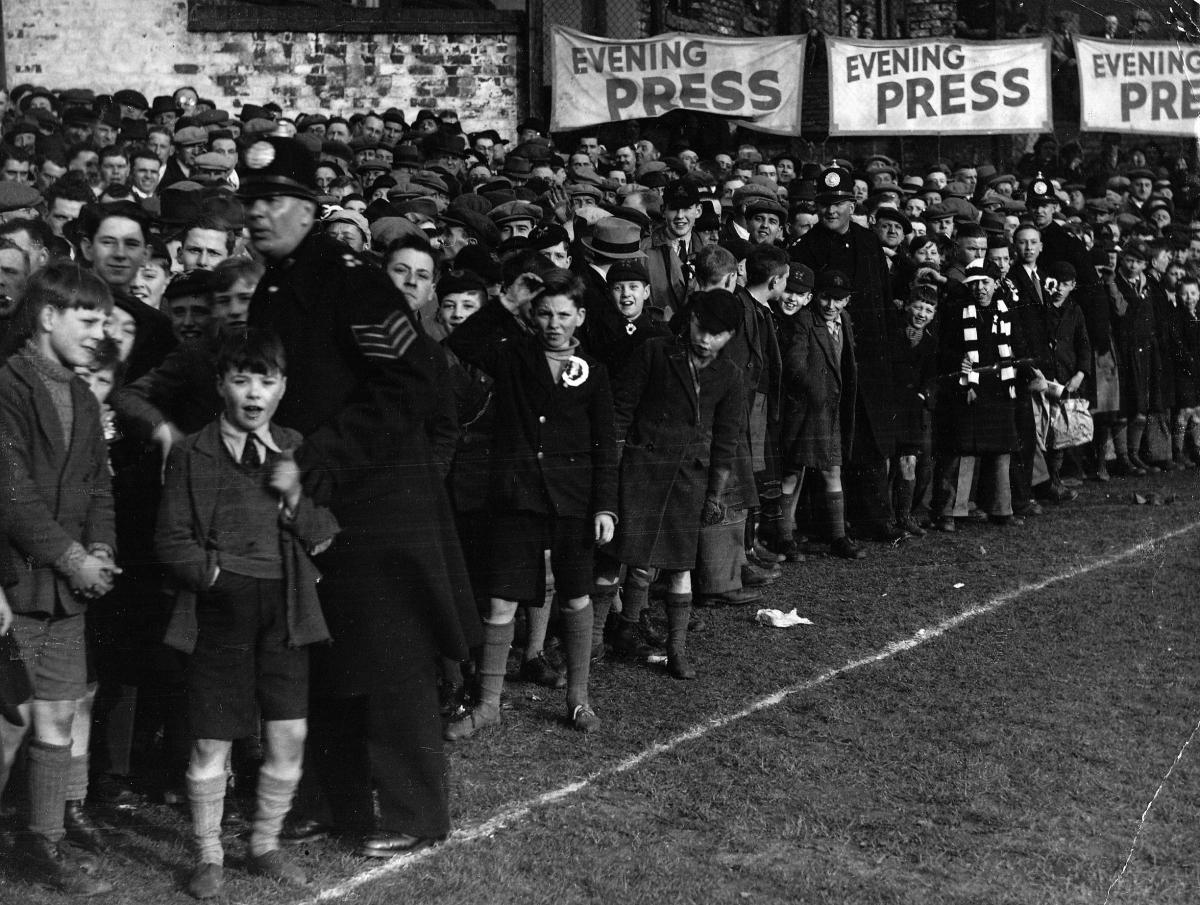
World War 2 saw football first suspended and then re-instated on a regional basis as a means of maintaining morale. Clubs were able to call upon forces personnel based in the area and played in semi formal leagues and cup competitions. In 1942/3, the Northern Section consisted of 48 clubs, City drawing up on many soldiers (many based at Strensall, Fulford and Catterick) and airmen stationed across Yorkshire finished 17th. In The League North War Cup, City reached the semi final before losing to Sheffield Wednesday (pictured, note the roof).
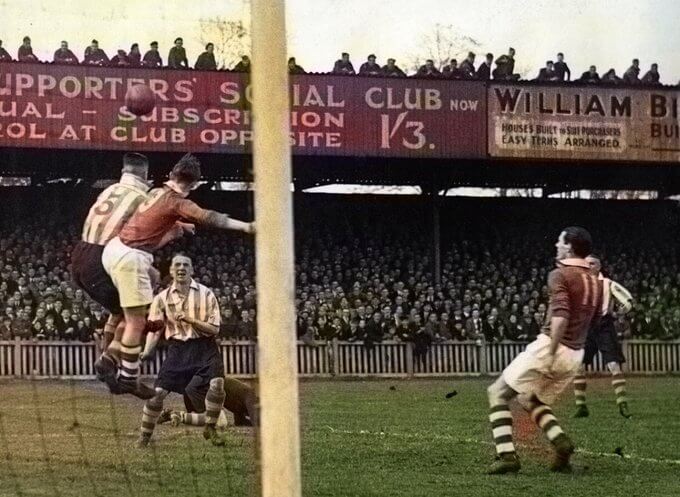
Bootham Crescent did its bit for the war effort. The Main Stand dressing room and corridors and the Popular Stand were commandeered as air raid shelters for the staff and pupils of the nearby Shipton Street School. The ground was slightly damaged during the infamous Baedeker air raid on York in April 1942, but adjoining streets were less fortunate. Next to the school were two rows of houses called Pickering Terrace which suffered a direct hit from the bombs with a mother and her young daughter being amongst the fatalities.
For many years, the ground remained largely unaltered.
In 1948, City purchased the ground. In 1946, at the time of expiry of the original 14 year lease, City signed a new 21 year lease at the same £100 rent, rising to £125 from year 8. The post war boom in football saw City investigate options to purchase the ground. A £3,000 bid was rejected in September 1947. A £4,000 offer was made a month later and it was finally agreed in principle in February 1948, City paying that sum into a bond as a series of tortuous negotiations continued. A final price £3,886 was agreed, adding legal and surveyor costs for both sides and a portion of rent due to up to the sale date, the final price was £4,075, around £340,000 in today's money.
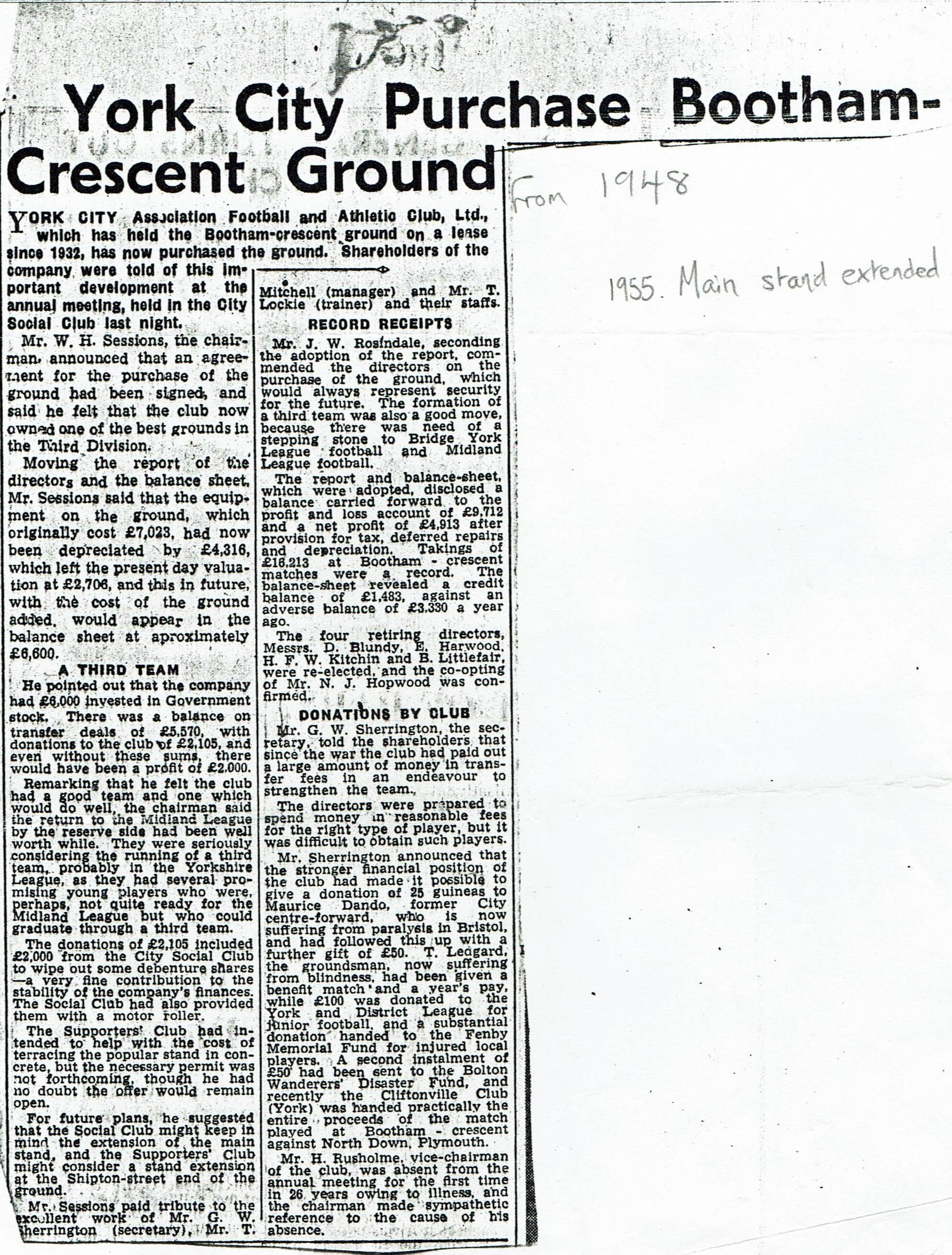
It wasn't until the early 1950s that terracing in The Popular Stand (then no seats) and The Shipton Street end were concreted.

The late 1950s saw a period of change at the ground. The Main Stand was extended and floodlights erected. The section of The Main Stand nearest Shipton Street was built in 1955 (evidence of the join was visible for the rest of its life) following the cup run at a cost of £7,000. That summer also more terracing concreted and toilets improved. The first floodlights were erected in the summer of 1959. The players noted an improved atmosphere and noisier crowd whilst evidence suggested games generally attracted a larger crowd under lights. The first reserve game (v Bradford City) played under lights drew a crowd of 2,700, twice the norm. Meanwhile, floodlights allowed the part time players to train on a winter's evening. The 1958/9 was also the first time City's players had been on a crowd bonus for a 5 figure attendances, so they also appreciated the lights from a financial viewpoint.
At the time, extending The Main Stand over the Social Club was mooted.
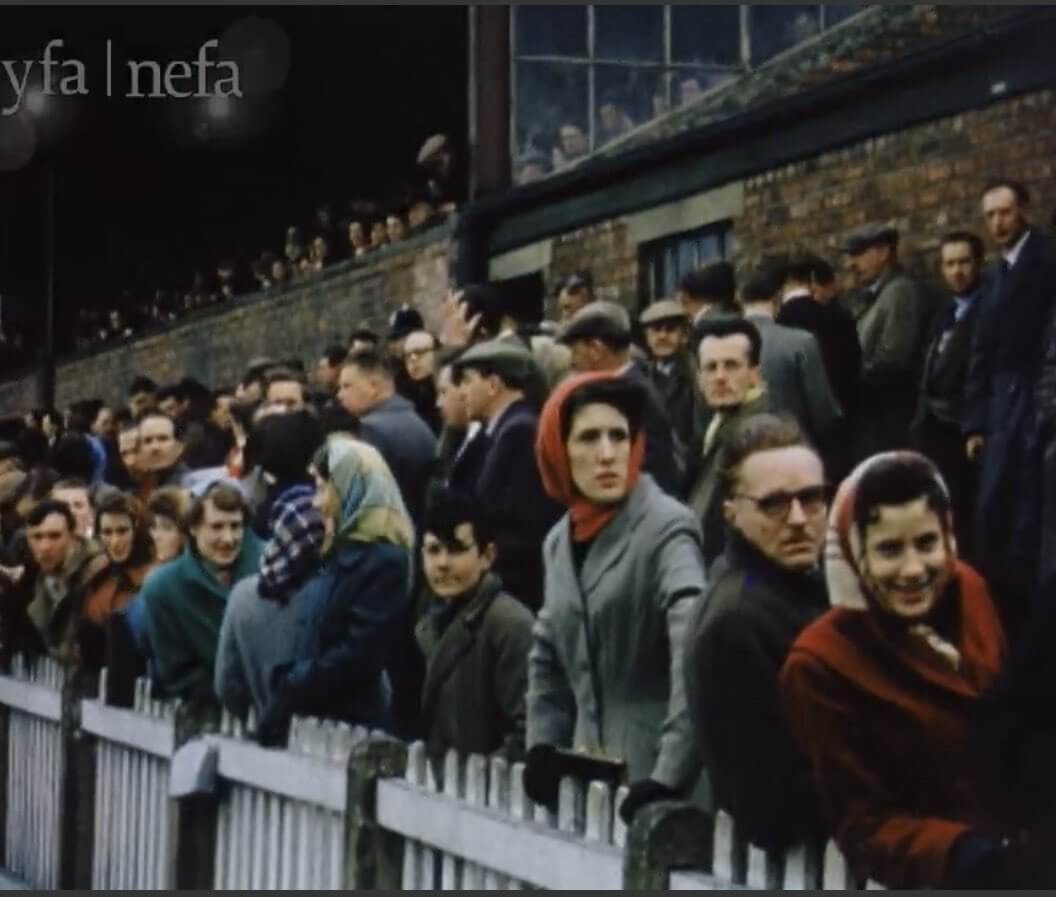
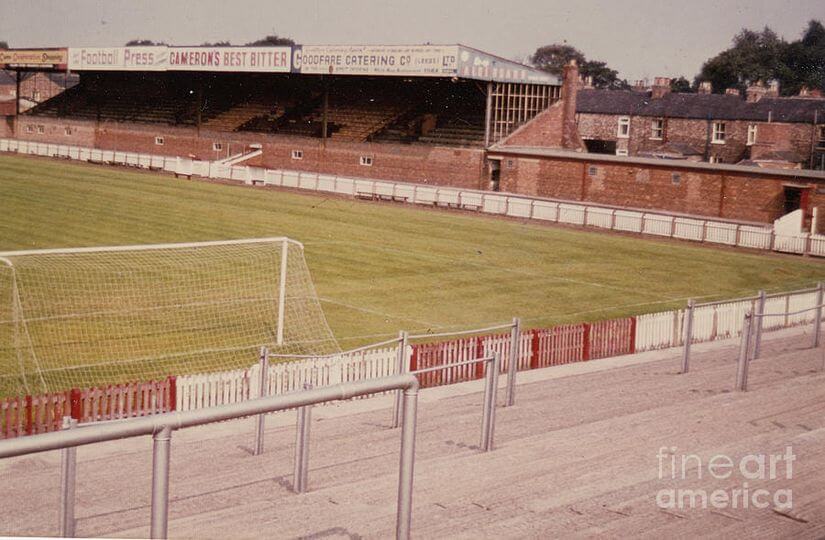
I remember when I started supporting City in the late 1960s, the club shop was a small wooden programme shop at the Bootham Crescent end, near where the gymnasium was later built. It wasn't until the 1970s that the first club shop appeared on its current site.
Around this time, 3 long standing traditions stopped. The "Happy Wanderer" song which had been played at home games since our 55 FA Cup run was discontinued. It heralded the end of two other traditions. Shortly afterwards, the tunnel that ran the length of the ground behind The Popular Stand was closed, meaning an end to the practice of both sets of supporters changing end at half time (and before the start if their team was kicking the wrong way) and also the tradition of lowering City’s flag about 5 or 10 minutes before the end of a game.
The 1970s saw 2 significant changes due to the rise of hooliganism. First, the enclosed tunnel that ran underneath The Popular Stand and enabled both sets of supporters to change ends and be behind the goal their team was supporting was closed. Then, as City reached Division 2, the designated end for home supporters was moved from the Grosvenor Road end to the Shipton Street end, initially as a one off for the visit of Manchester United in December 1974 and then a permanent change.
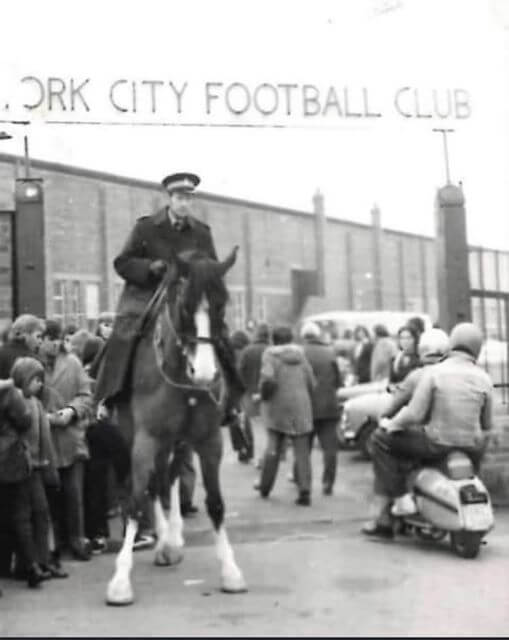
Also in 1974, The Popular Stand became seated, using seats bought second hand from Manchester City.
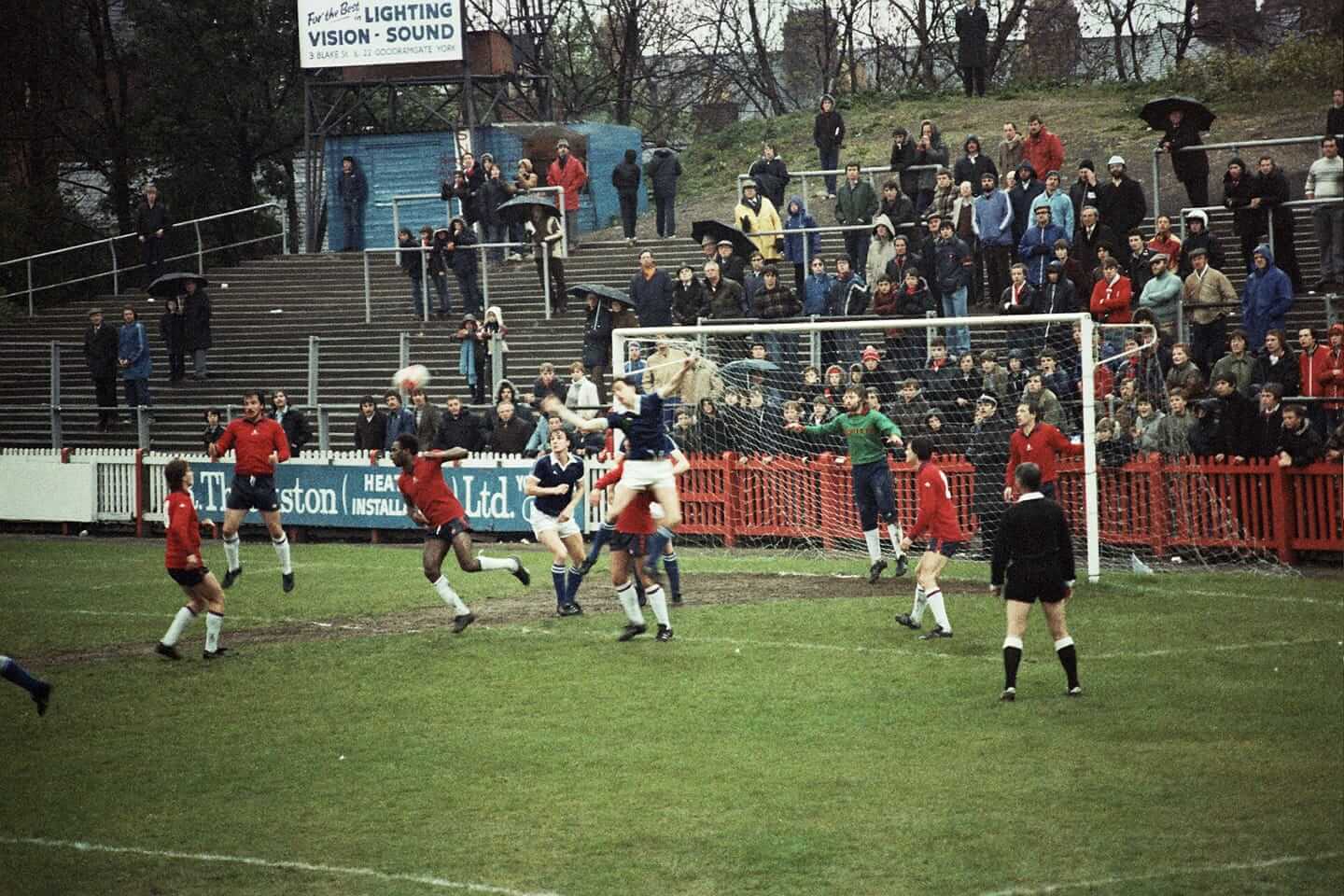
In more recent years, further work has occurred. Spurred on by promotion in 1984, various Main Stand improvements were made (including offices and dressing rooms) and The Shipton Street turnstiles were re-aligned. 1986/7 saw hospitality boxes built, a rare example of such facilities having no view of the pitch. Even later, during the 1992/3 season, the Family Stand and original Family Room beneath The Main Stand were opened. The Enclosure disappeared with The Main Stand being extended with extra seats down to ground level and the canopy of the roof also widened and re-angled to provide more protection against rain.
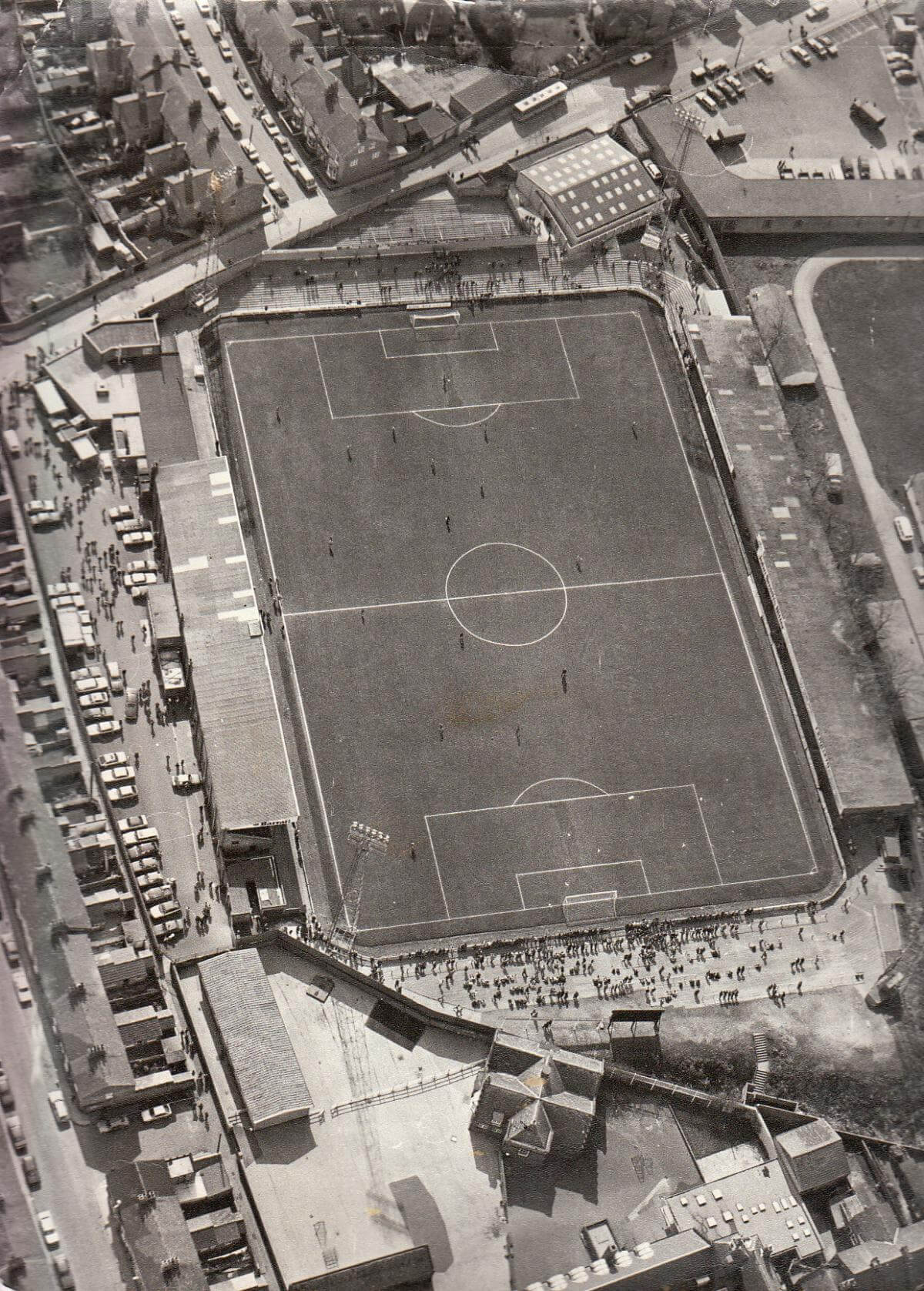
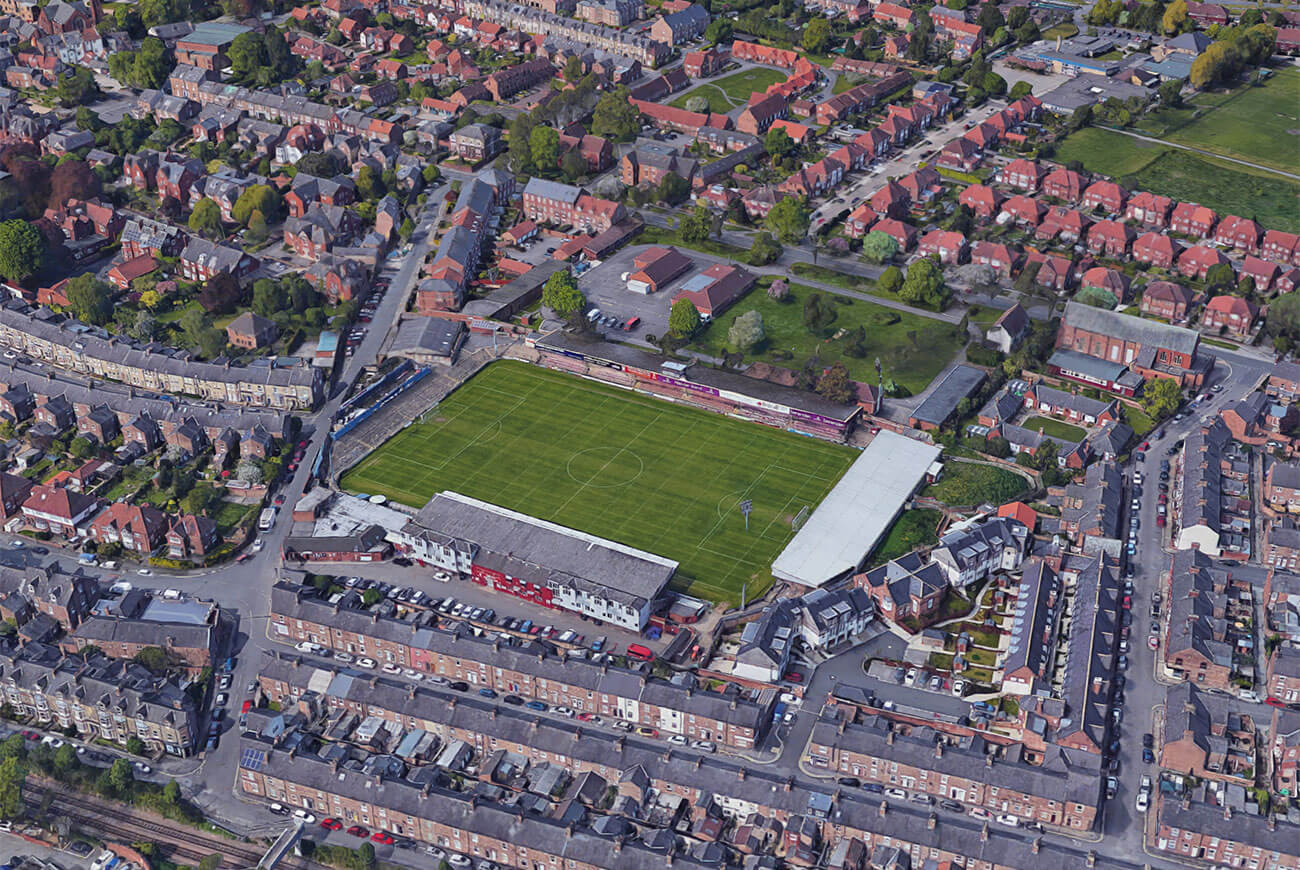
In August 1991, The David Longhurst Stand which can be traced back to a supporters initiative to provide covered terrace for the loyal City supporters, was opened.
In November 1997, when the 1996/7 season accounts were published, City confirmed plans for a new Grosvenor Road stand had been deferred due to the unavailability of grant aid.
For many years, supporters regularly helped to renew the ground every summer, in the 1960s sometimes alongside the players. The work often involved painting, replacing sections of the corrugated iron roof and repairing the wooden fence around the pitch and was often rewarded with a season ticket.
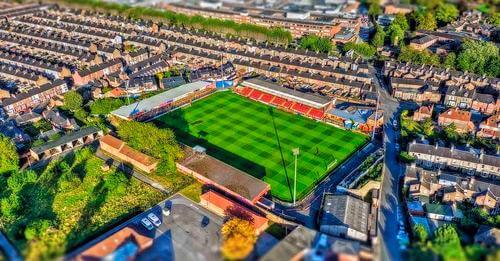
In 2005, Billy McEwan revived the concept of supporter ground aid as he lead supporters in giving the ground a thorough cleaning as Billy's new brush went through the ground and club, although strong cleaning materials and much elbow grease were required to bring the showers and changing rooms up to the high standards that Billy required.
Craig Sells Ground - Read All About It
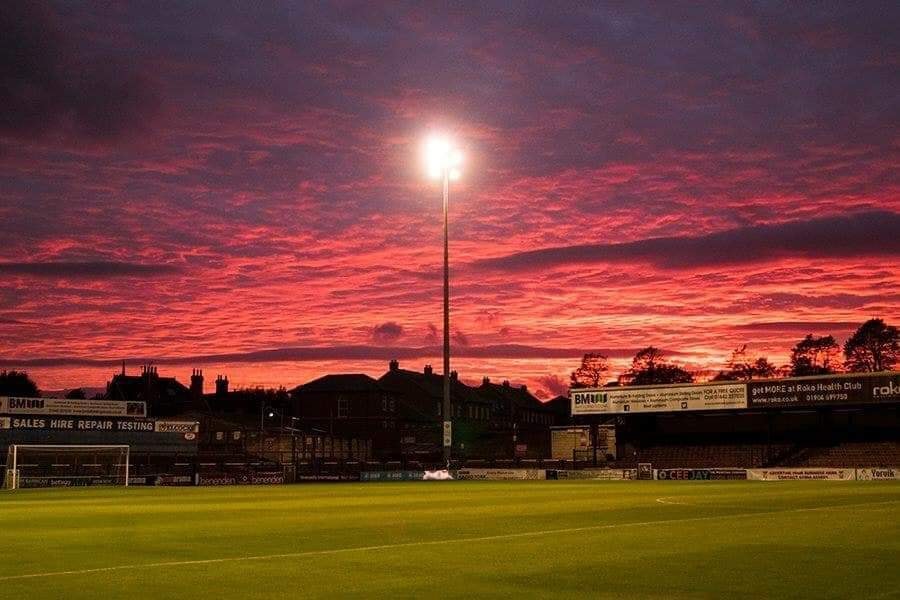
An agreement with the Football Foundation enabled City to re-secure the ground with a £2m loan (at £100,000 interest per year) until work on a new ground (a condition of the purchase) was completed.
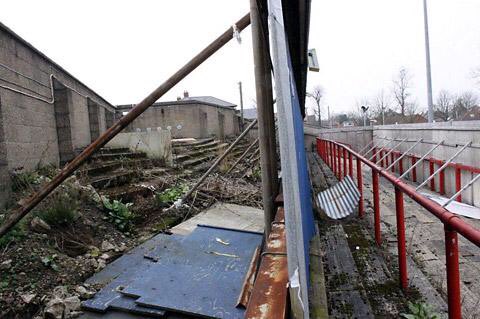
It was this amount that Nestle paid City in January 2005 to rename Bootham Crescent as Kit Kat Crescent. The same sum was paid annually each year over the length of the 5 year deal. In January 2010, the ground reverted to its traditional Bootham Crescent name.
Our home for over 88 years, Bootham Crescent is likely to become York's latest buy to let bonanza within the next decade. As well as football, Bootham Crescent has hosted rugby league, American football, baseball and cricket (including Yorkshire CCC friendly games). A rock n roll revival concert in 1979 proved a short lived diversion into the search for alternative income streams, though various bands have played The Social Club over the years.
Once the builders move in, can we expect to see:
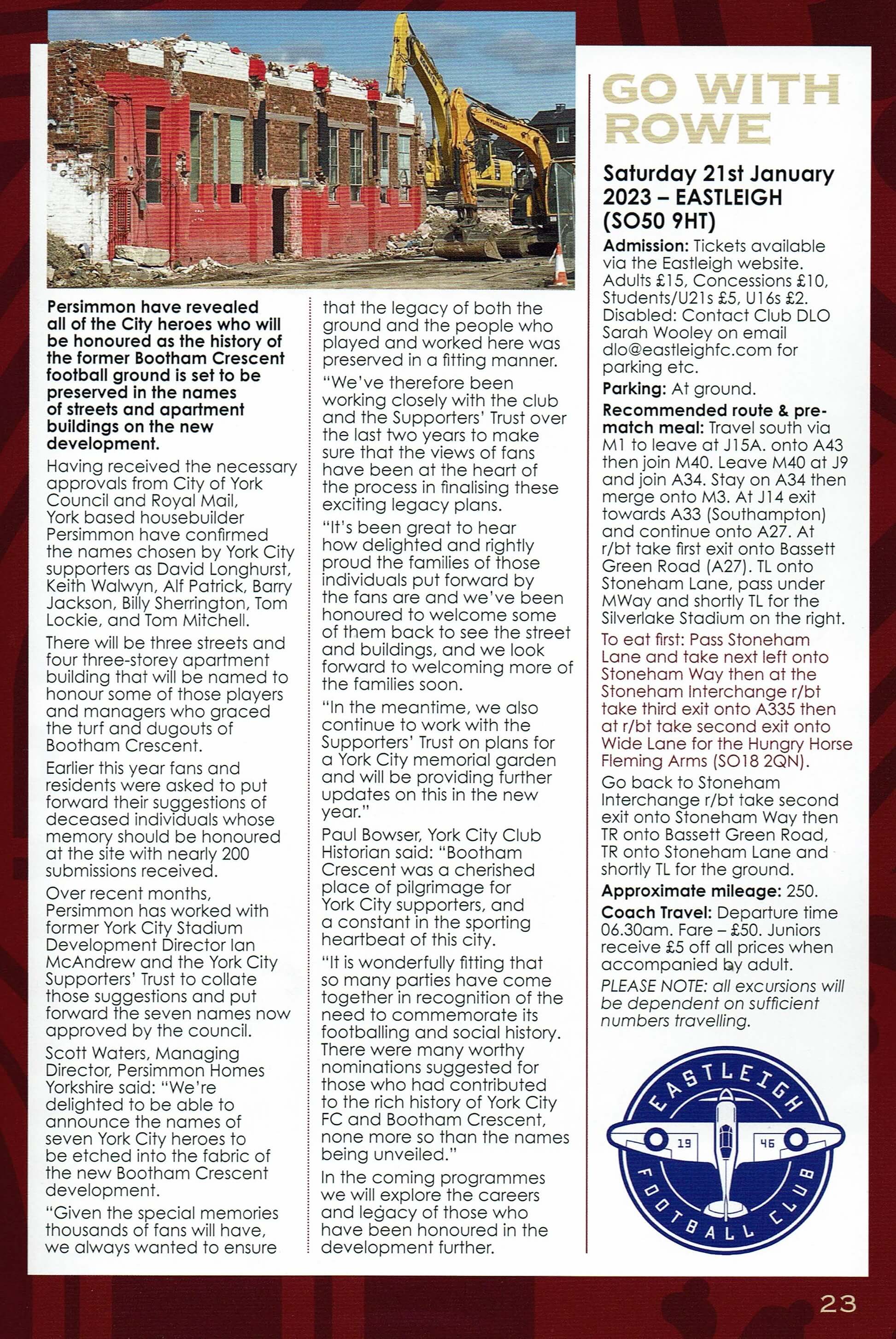
Bootham Crescent - The End
Grandiose plans for the end of Boothan Crescent came and went. Alan Stephenson was employed as a stadium move consultant had planned to replicate many of the events that he had organised for Chesterfield, his home town club, when they left Saltergate, including a sportsmans dinner held under a large marquee on the pitch and an auction of ground assets.
With numerous delays (and then covid), its was almost impossible to set in stone any definitive plans. On Radio York (October 22, 2021), Steve Kilmartin noted plans for an opening Monks Cross game against Manchester United (due to the uncertainty of the move date and therefore inability to give United enough notice to confirm the game) and events at Bootham Crexcent including a concert (Shed Seven had expressed an interest in headlining) and beer festival didn’t come to fruition. Equally, an earlier muted grand sportsmen’s dinner under a marquee never saw the light of day.
Come autumn 2020 and plans were confirmed for the sale of Bootham Crescent's assets. The first items to be offered were seats from the ground allowing fans to buy the actual seat they had sat in. Stage 2 was to be an online auction.
In December 2020, it was announced (matchday programme 12/12/2020) that one of the antique turnstiles at the Grosvenor Road end had been purchased by Irlam FC who plan to install it their ground. It had been manufactured in the 1930s by "W T Ellison & Co Ltd" who were based in Irlams o' th' Height.
The last City game to be played at Bootham Crescent was on 28th 2020 when City beat Guiseley 1-0 thanks to a Josh King goal in front of a coronavirus limited crowd of 627, his only "goal" for City as the result was later expunged and the season declared void due to coronavirus.
Read Yorkshire Post - nearly 2 decades to move.
Bootham Crescent - Gone, But Never Forgotten
For generations of City supporters, Bootham Crescent was a sanctuary, a chance to meet up with old friend s, make new friends and hope for better days. The Social Club was the centre of many of those activities. Over the years, it went through many phases, trying to stay relevant and to make money for City.
Read Alex Bedingham remembers the Social Scene and Don Nixon.
The 1970s heralded a period when City tried to bring in house many functions, the role of the Supporters Club was much reduced. In its later years, Don Nixon was mine host for a number for a number of years. The 1990s saw it packed out on match days and some non match days as City’s on the pitch success provided a feelgood factor. The Junior Reds often packed it out on non match days. At times it was the place to be seen and won awards. In its later years, much of the vibrancy was stripped away as City once again brought management of it in house, resulting in a much subdued atmosphere whilst across the road, the Burton Stone Lane social club did a roaring trade on match days.
Read Alex Bedingham - "There's No Place Like Home".
Bootham Crescent - Rip It Up And Start Again
Details of Bootham Crescent memorabilia auction were announced in February 2021. In total, 1,350 items were listed.
Artefacts from the ground found their way to many locations across the country.
An original turnstile became a museum exhibit whilst seats found their way into many homes and back gardens.
Scotland’s Lowlands League side Gala Fairydean Rovers bought a number (approximately 100) of Pop Stand seats for installation at their ground as did Northallerton Town (approximately 170 seats), Burnley, Penistone and Warrington Rylands. Paul Barnes noted he'd bought a couple when speaking to York Hospital Ball. By the end of March 2021 all the Main Stand seats had been sold. Gala Fairydean - read more.
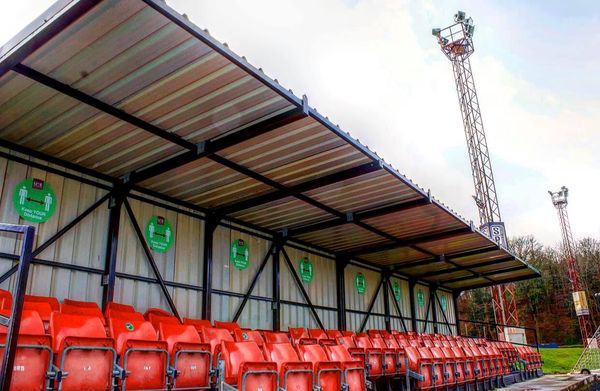
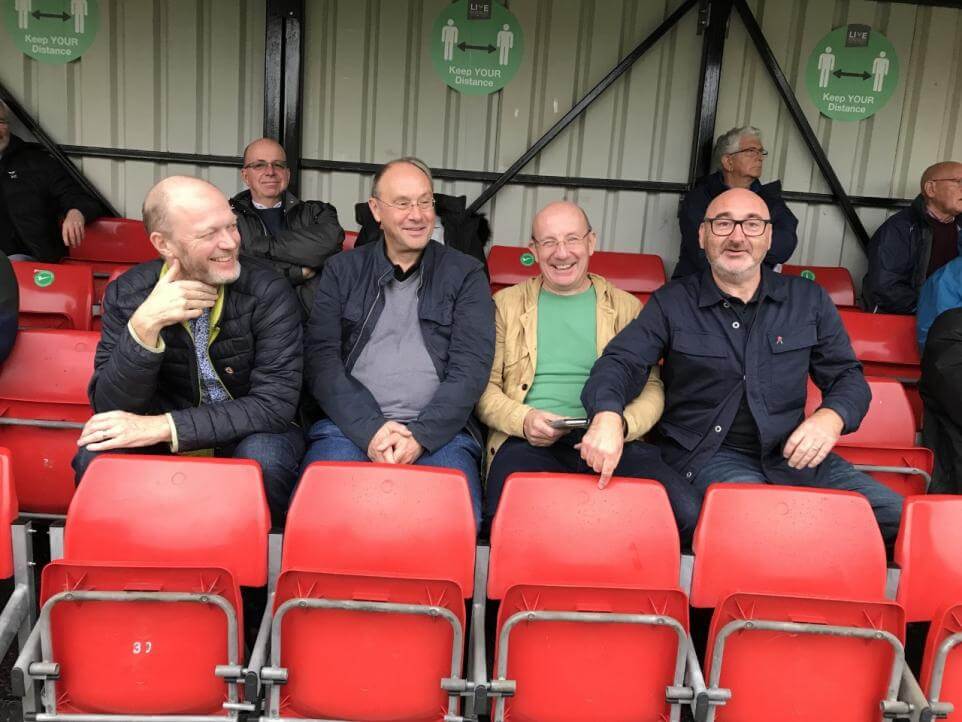
Nick Pope bought a set of goal posts to install in his back garden.
Sophie Purves installed a set of old taps from the communal bath (after a makeover thanks to @TapRefurbish) in her bathroom in Kent.
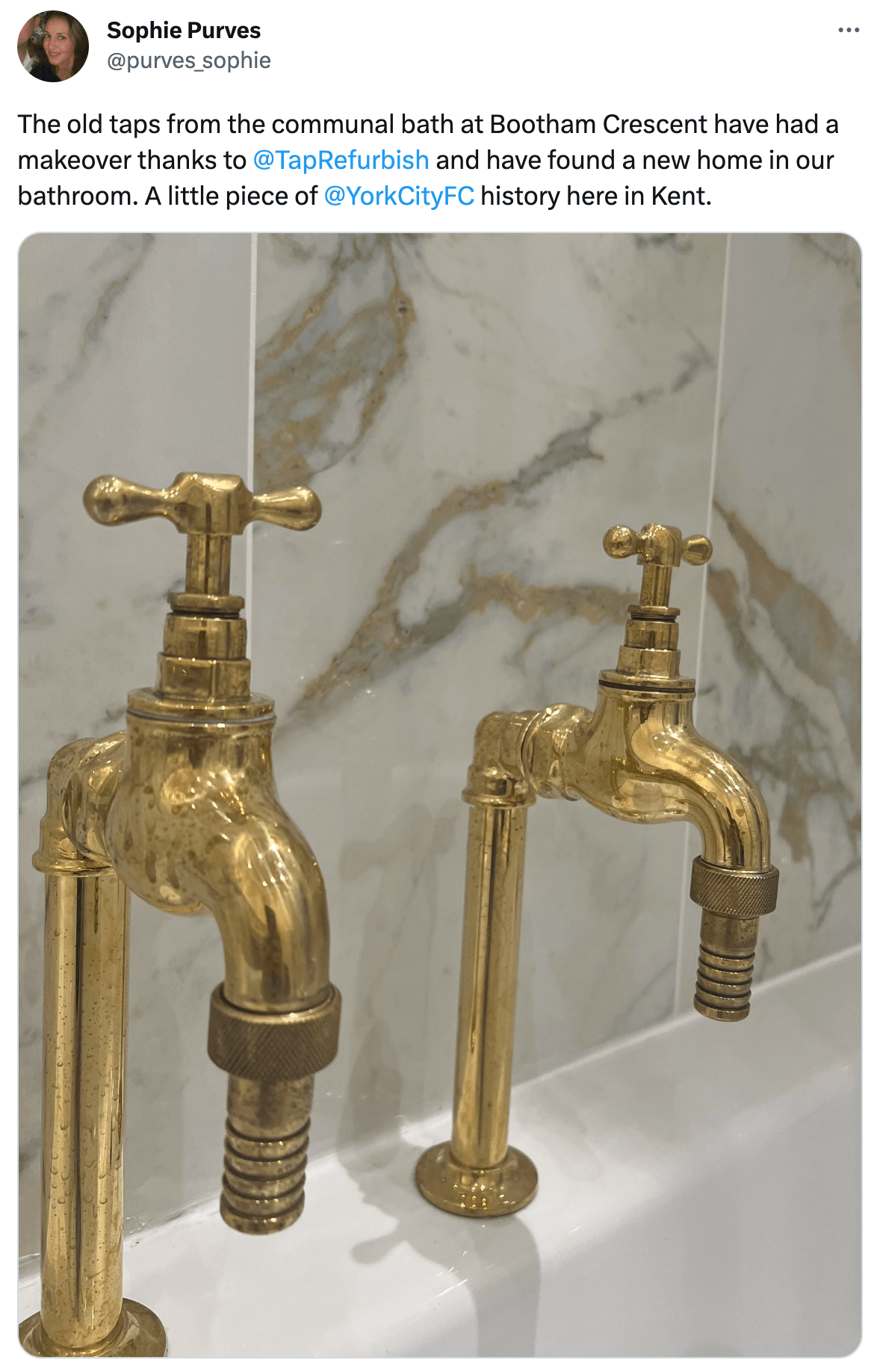
In March 2023, an artist's impression of the memorial garden was issued. At around the same time, an picture of the remains showed a 4 metre section of the tunnel in what looked like a poor condition. It is also expected that some bricks will be re-purposed in the memorial garden at the new development. Read more.
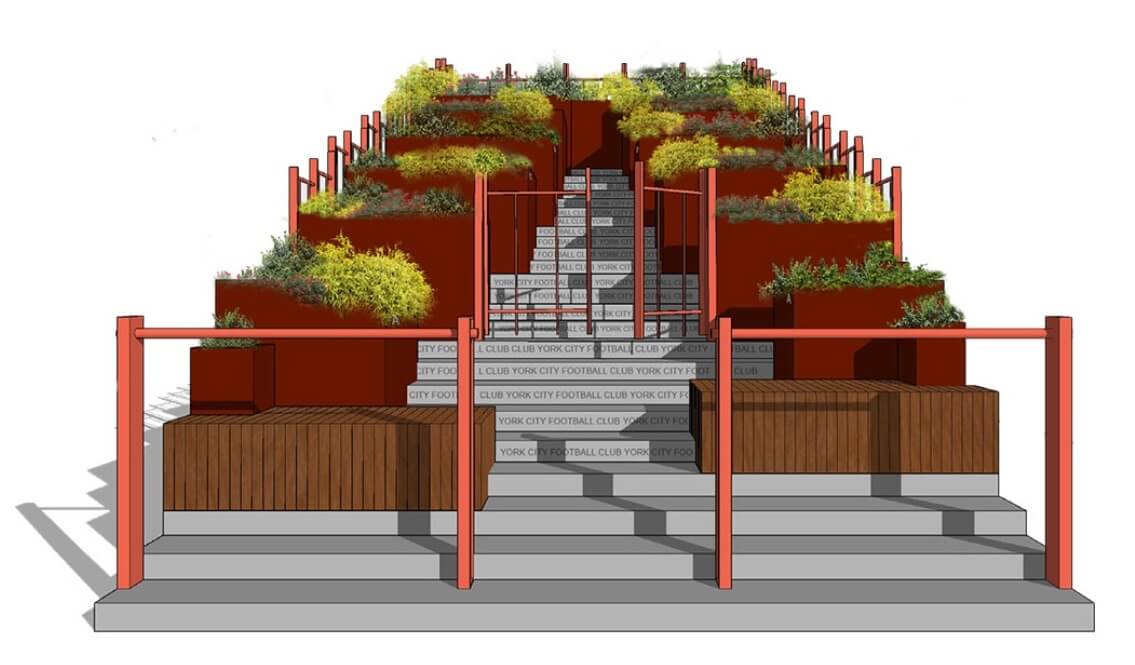
On May 2nd, 2023, the first 3 new homes (post code YO30 7AH) went on sale via Savills, a local estate agent.
The two four bed terraces (3 storey) and one three bed terrace (2 storeys) are priced at £525,000 and £400,000 respectively and front out onto Grosvenor Road. They are available to buy off plan and the advertising came with artist impressions of the properties. No completion dates were mentioned. The development will provide 93 new homes with 19 properties to be transferred to the Joseph Rowntree Housing Trust to be made available for social rent and discount sale. A mix of properties will be available including, two, three, and four bedroom houses as well as one and two bedroom apartments.
On December 12th, 2023, Savills were marketing a "one bed city centre freehold coach house" with a £225,000 guide price.
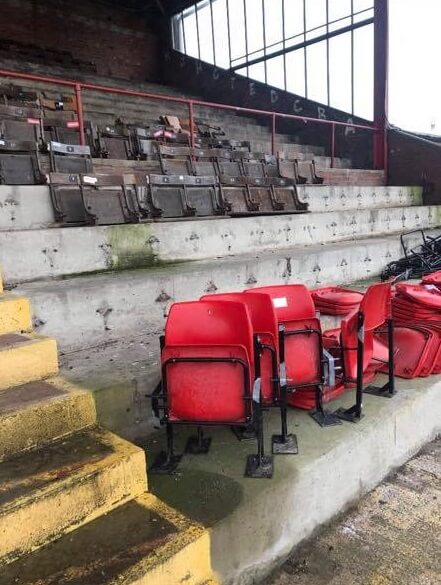
Persimmon Homes
Persimmon bought the ground and gained planning permission to build 93 new homes on the Bootham Crescent site. Their plans included 4, three-storey apartment buildings and 3 main streets.
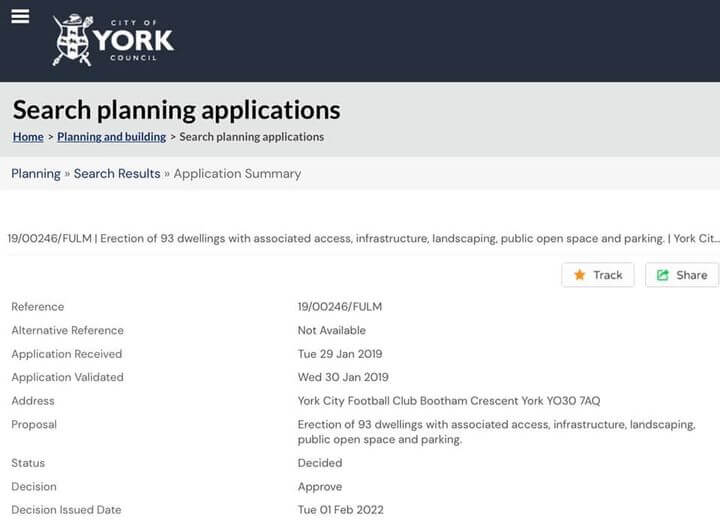


Bulldozers moved in in April 2022. Read More.
Persimmon and York City engaged on a process to determine the names and sought permission from the City of York Council and Royal Mail ratification. The criteria meant that only deceased people would be considered and permission was required from their nearest relative. Named after people, not events / nicknames etc. (so ruling out “Happy Wanderers “or “Wembley Double Winners” and similar), the names were announced in December 2022 in the Yorkpress:
In June 2024, the first street, Alf Patrick Court was offically named.
The Future - Monks Cross
Many claim Bootham Crescent to be land locked with no room for expansion and with little (or no) scope for any non match day revenue raising activities whilst its age means there is considerable ongoing expense on maintenance.
Plans for a new ground progressed at a slow pace, largely caused by getting council support and agreeing upon the site. A number of sites were suggested and ruled out, including A64 west of York, York North (Nestle factory (Haxby Road)), the old gas works (Foss Island), British Sugar factory (Poppleton Road) and York Central (disused railway land between the station and carriage works). Eventually plans for a Community Stadium at Monks Cross (Huntington) were formulated.
On 27 March 2015, detailed planning permission was finally approved and plans were afoot for City to be at their new Monks Cross ground in time for the start of the 2016/7 season.
Initial hopes were that the new ground would provide City with income streams for 365 days a year. Some smaller clubs use their ground for much more than just matches. Steve Beck has previously used the example of Macclesfield who own their own banqueting suite and host an EU sponsored computer training lab which generates £500,000 a year.

The build encountered many delays, building work eventually started in late 2017 and should be completed in 2018, by the end of 2019, early 2020. Work was eventually signed off in December 2020, City moved in during the following month with the first game (staged behind closed days) played against AFC Fylde in February 2021, it was subsequently voided along with the rest of the season due to coronavirus.
Training Grounds
Over the years, City have had many different training grounds, often using Bootham Crescent itself. The club's Wiggington Road training ground was officially opened in October 1998 by Alex Ferguson.
From memory, other training venues have included Bootham / Clifton Hospital grounds (on the other side of the railway), New Earswick Joseph Rowntree School playing fields (1960s under Tom Lockie and again as late as 1993), St Peter's School / Bootham School (Rawcliffe Lane), the site of the District Hospital (which was a cricket field until the late 1960s when the hospital was built), Civil Service ground (which also hosted A team and intermediate fixtures), York RI gym, Thanet Road (all weather), land near The Bumper Castle pub, Knavesmire / York racecourse (a favourite for pre season training), York University (later re-branded York Sport Village at Lakeside Way (YO10 5FGV)) and even Clarence Street, the long time home of York RLFC. The Co-op ground on Stockton Lane was used for City's 3rd team for 2 seasons between 1949 and 1951. Closer to home the Bootham Crescent car park and area inside the ground at the Grovsenor Road end also provided training facilities. Additionally, in former years, the club regularly trained on Scarborough and Filey beaches, often in the week before a cup game or in times of a winter freeze. The big freeze of 1963 saw City play a friendly against Sheffield Wednesday at Scarborough's Burniston Barracks.
... And Finally ... Lovingly crafted by John Le Maitre using traditional (some would say basic) craft techniques and believed locked away in a garage until 2021, a set of 93 (all 92 Football League clubs and Wembley) football ground models were auctioned in June 2021. City’s Bootham Crescent made £80. 93 Models For Auction
